 Your new post is loading...
 Your new post is loading...
Reputation is everything. And on the internet, that couldn't be more true.It's important to always know what people are saying about you -- whether it's your customers, your competitors, or the press. And on any given day, it can be tricky to keep up with what your audience is sharing across a variety of social media platforms. So, we've rounded up some of the best free social media and brand monitoring tools from around the vast web of social networks. Nearly all of these tools are free, but some offer paid versions with more features and capabilities. Let's dive into each one -- and see if you want to test them out today....
Could bad PR pose an existential threat to one of tech's highest-flying companies? If Lyft's fortunes are any indication, Uber might have reason to worry. While Uber has been dealing with bad headline after bad headline, Lyft has been courting riders and polishing its image. For example, when Uber was facing a #DeleteUber campaign over CEO Kalanick's participation in a business advisory council for US President Donald Trump, Lyft was responding to Trump's temporary travel ban targeting seven Muslim countries by announcing that it would be donating $1m to the American Civil Liberties Union. Is Lyft's cleaner image winning over consumers?According to Bloomberg, Lyft's ridership and bookings "surged" in the first quarter of the year and according to fundraising documents Bloomberg obtained, the company is beating its internal targets. The documents revealed that Lyft's gross bookings in Q1 grew to $800m, more than double what they were in Q1 2016, and total ridership in February was 137% higher than February 2016....
From United Airlines to Uber, we’ve seen a number of scandals unfold this year that have changed our feelings about a brand. And whatever size the business, its reputation and customers are key to its success. Taking into account data from more than 23,000 small-business owners, Alignable revealed in its Q1 2017 SMB Brand Trust Index Report the most and least trusted brands. In the report, small-business owners were asked how likely they were to recommend a major brand to another business owner. Unsurprisingly, many of the brands we’ve seen in the news such as Uber, Wells Fargo and United Airlines had poor reputations among business owners. However, people are very trusting toward tech companies such as Amazon, Wordpress and Google -- in fact, these brands have stayed in the top three positions for most trusted brands for two straight quarters. And whatever Amazon’s doing, it’s doing it right: The ecommerce giant has held first place for three consecutive quarters. For the first time ever, Apple and FedEx made their way to the the top five slots this quarter....
When last month’s “Communicator of the Year” can turn into this month’s PR disaster, there’s a lesson for any brand on the perils of flubbing a corporate apology. Any brand can go from hero to zero.
Much has been written in the last week about the missteps of United and its CEO. Given that it was PRWeek that so recently awarded Oscar Munoz as “Communicator of the Year”, I thought the PRWeek postmortem was particularly interesting:
“No company or brand can rest on its laurels when it comes to its reputation. Protecting and enhancing it is a 24/7, 365 days a year undertaking....
Last month three of Under Armour’s celebrity endorsers — Stephen Curry, Misty Copeland, and Dwayne “The Rock” Johnson — publicly criticized the company’s CEO, Kevin Plank, for making a favorable statement about President Trump. This was an unusual PR challenge. Normally, executives worry about their endorsers behaving in ways that reflect poorly on their companies, such as getting in trouble with the law. They don’t expect to be reprimanded by the very people they’re paying to market their products. In today’s hyperpartisan environment, companies are facing backlash from in-house employees, too. As detailed in this report, one Oracle staffer posted a letter explaining that he had quit his job because the company’s co-CEO, Safra Catz, joined Trump’s transition team. And after IBM chief Ginni Rometty congratulated Trump on his election win, staffers circulated an online petition asking her to allow them to refuse to participate in projects that violate civil and constitutional liberties. It now has more than 2,000 signatures. What should companies do when insiders publicly condemn them? Based on my experience training communication executives on how to handle such situations, here’s what I recommend....
Perhaps you noticed that there was a screwup at the Oscars last night. Faye Dunaway and Warren Beatty announced that “La La Land” had won the Academy Award for Best Picture . . . and then had to backtrack, because there was a mistake. “Moonlight” was the actual winner.
After the mistake, many people behaved graciously. In what has to be the most heartbreaking moment of his career, “La La Land” producer Jordan Horowitz realized he didn’t receive his first Oscar, and then beckoned the producers of “Moonlight” to come on stage. Warren Beatty explained why he’d made the mistake — he’d gotten the wrong envelope.
But who was responsible for the screwup? It was PriceWaterhouseCoopers, the accounting firm that counts the votes and determines the winners.
PriceWaterhouseCooper’s statement is a model apology. Here’s PwC’s statement just after the event...
Marketers may find themselves faced with a timely dilemma: What to do when the leader of the free world calls out your brand—or even your CEO—by name in a tweet? A year ago, the mere suggestion of that would be preposterous. Today, that’s not something outside of the realm of possibility. The question is: How political do brands need to get in 2017? While the retail world may be the current battleground between the White House and the private sector, consumer packaged goods, tech and business-to-business leaders could be next. This is a new day in American politics, and we are just one month into the Trump presidency. Brands must ask themselves, where do we take a stand, why and to what end? And if I do take a stand, what risk do I take on with angering possibly half of my consumers? While there are perhaps no easy answers, and the rule book has yet to be written, there are a few suggestions:
“Many of our global clients have already requested that we block this site on our activity.”
An employee for the agency described it to BuzzFeed News as a “preventative measure”, as online advertising is assigned to websites algorithmically.
Omnicom handpicks the sites their clients’ ads run on, which is known as a whitelist, whereas ad exchanges or networks such as Google’s typically work on a blacklist where brands specify which sites not to run on.
The email from management added: “If you are running activity through ad networks such as MediaIQ/Regital, Quantcast & RocketFuel it is worth reaching out to your rep and making sure Breitbart is blacklisted and request a URL level site report over the past 30 days which all should be able to provide.”...
Wittingly or not, major global corporations are helping fund sites that traffic in fake news by advertising on them.
Take, for instance, a story that falsely claimed former President Barack Obama had banned Christmas cards to overseas military personnel. Despite debunking by The Associated Press and other fact-checking outlets, that article lives on at "Fox News The FB Page," which has no connection to the news channel although its bears a replica of its logo.
And until recently, the story was often flanked by ads from big brands such as the insurer Geico, the business-news outlet Financial Times, and the beauty-products maker Revlon.
This situation isn't remotely an isolated case, although major companies generally say they have no intention of bankrolling purveyors of fake news with their ad dollars. Because many of their ads are placed on websites by computer algorithms, it's not always easy for these companies to steer them away from sites they find objectionable....
Like our favorite celebrities, brands aren’t perfect. Bad PR is a part of life because people aren’t perfect and the companies they run follow suit. Recently New Balance became the first company to publicly back Donald Trump, a very divisive figure for reasons you would have to be sleeping under a rock to not know already. Priding themselves on being a brand that develops their products on American soil, New Balance saw Trump’s election as an opportunity for business growth and one that would bring more jobs to Americans. However, that is their opinion and not some universal truth. Politics is a tricky place for a brand to choose sides when there are so many issues that people take seriously. Thousands of sneakerheads were outraged at New Balance’s political stance. So outraged that they denounced their love for the brand all over social media by literally posting pictures of them throwing the sneakers away and burning them. Things really spiraled out of control when neo-nazis procclaimed the sneaker to be the official sneaker of white people. Yes, that really happened. Obviously publicly backing a divisive president-elect has some serious downsides with the public, so what do we do as consumers after our favorite brands choose to do something against our personal values?...
The President-elect's supporters are threatening to boycott Pepsi (PEP) over fabricated statements circulating on social media. Twitter users, many citing debunked news articles, claim PepsiCo (PEP) CEO Indra Nooyi told Trump fans to "take their business elsewhere. "Sites designed to trick people, including Truthfeed and Gateway Pundit, published the fake quote while encouraging readers to stop buying Pepsi's products. Gateway Pundit also incorrectly claimed PepsiCo's stock plunged 5% because of the comment that Nooyi never actually made. Nooyi never told Trump's supporters that Pepsi doesn't want their business and she even congratulated the president-elect on his victory. But she condemned the ugly rhetoric of the campaign....
The Samsung Galaxy Note 7 debacle is a master class in how not to handle a crisis. Much will be investigated in the months ahead. But what I find particularly interesting is how Samsung communicated what was happening at each stage of the crisis.
This weekend, the US DOT banned the Galaxy Note 7 on all US flights, categorizing the phones as “forbidden hazardous material.” It doesn’t get much clearer than that. Yet, just a few days earlier, Samsung portrayed the situation as “temporarily adjusting the production schedule to ensure quality and safety matters.”
The gap between “forbidden hazardous material” and “temporarily adjusting the production schedule” is a massive chasm. A few weeks earlier, Samsung similarly described a “global product recall” as an “exchange program.”...
No matter how secure and well-placed a brand appears to be, the danger of an online reputation crisis is always lurking. The open nature of modern day communication channels, like blogs, social networks and review sites, means that one bad customer experience or a small lapse in service standards can quickly damage a brand’s reputation. Negative experiences shared more often Research shows that consumers are much more likely to share negative experiences on social networks and other public platforms. A damaged online image can have severe effects on a brand’s value and business performance. A study by Deloitte shows that nearly 41% of companies that experience a negative reputation event reported loss of brand value and revenue....
|
Hootsuite founder and CEO, Ryan Holmes, dishes on why social media is not just important for brands, but for the heads of the brands as well. When it comes to marketing, social media is often discussed as a channel directive. It is a channel marketers need to cultivate an audience on, and can be used to humanize their brand to an extent. Social—especially in the age of Trump—is now often a medium where brands must defend themselves against major scandals. But we rarely bring CEOs into the marketing/social media mix.Ryan Holmes, founder and CEO of Hootsuite, spoke with us in the latest DMN One on One podcast. We caught up with Holmes a few days before the release of his latest book, "The 4 Billion Dollar Tweet." Here's our conversation on how CEOs can, and why they should, get savvy with social media....
David Dao, the doctor who was seen being dragged off a United Airlines jet this month in videos that sparked widespread outrage, has reached a settlement with the airline for an undisclosed amount, his lawyers said on Thursday.
The April 9 episode had stoked the fears and frustrations of airplane passengers everywhere and became a public relations nightmare for United.
On Thursday, both sides welcomed what they hoped would be the end of the ordeal.
“Mr. Munoz said he was going to do the right thing, and he has,” Thomas A. Demetrio, one of Dr. Dao’s lawyers, said of Oscar Munoz, United’s chief executive. “In addition, United has taken full responsibility for what happened on Flight 3411, without attempting to blame others, including the City of Chicago. For this acceptance of corporate accountability, United is to be applauded.”
The recent United and Pepsi social media firestorms are still captivating the media's undivided attention. It’s no surprise that the online perpetuation of these real-life events is the prime topic of conversation for marketers across all industries (not just airlines and soft drinks). Both brand blunders have sparked a burning question that’s occupying my mindspace, and it doesn’t have to do with brand reputation. “Does anyone even care?” Brands have one purpose, selling products and services to the consumers of the world. So unless social backlash and media scrutiny are causing a serious decline in sales numbers, are there any actual consequences?...
United Airlines made headlines this week after airport police forcibly removed a passenger from one of its flightSuch unfavorable occurrence is not the first for United. Several weeks ago, the airline disallowed two girls from boarding a flight as they were wearing leggings and were “not properly clothed via [its] Contract of Carriage.” It comes with no surprise that the incident has ignited a wave of responses online. While United Airlines attempts to clean up this unsavory fracas, here is a compilation of the best trolls by brands and netizens in response to the brouhaha, with some referencing Pepsi’s recent infamous ad....
But to little old me, a sincere apology goes a long way. When I sense genuine remorse, it means a lot to me -- perhaps because it's so rare, at least in my experience. Combined with my nerdy affection for all things marketing, that sentiment applies to brand apologies, too. It's not so much that I think, "Wow, that means a lot to me," but more like, "Wow, that company really nailed saying, 'Sorry.'" So, who's done it best? We rounded up some of our favorite brand apologies to inspire you next time you make a mistake -- and need to admit your wrongdoing....
In Trump We Trust — .com, that is.
Not your politics? Maybe check out ThrowOutTrump.com.
Actually, they're both empty websites, what you call parked domain names: bought and paid for, but not used.
More interesting is that they both belong to the same guy — Donald J. Trump.
A big hat tip to CNN, which had the idea to search for all websites registered by the Trump Organization and came back with a list of more than 3,000 — all the way back to the original DonaldJTrump.com, registered in 1997....
If there is one entrepreneur who knows the real value of building social relationships, and how they can extend into the world of social media, it’s health and fitness mogul Andy Frisella: founder of Supplement Superstores, Paradise Distribution, and the renowned fitness brand 1st Phorm International. These brands, among others, bring in more than $100 million a year.
How?
He has built a true community....
Should executives respond when a tweet or unexpected event touches their business or rouses their employees and customers? There are risks and rewards to CEO activism. Weber Shandwick, where I serve as chief reputation officer, and KRC Research surveyed 1,050 senior executives and 2,100 consumers across 21 markets worldwide to find out what people expect from corporate brands. Our research shows that the two biggest factors that influence respondents’ opinions about companies are what customers say about them (88%) and how they react in crisis (85%). In fact, how a company responds to a controversy, including how quickly, is more important in driving public perception about the company than what is said about that company in the media (76%), by employees (76%), on the company’s website (68%), by spokespeople (61%), or in the company’s advertising (61%)....
2016 saw its fair share of corporate public-relations mishaps, but some were more cringeworthy than others. To be sure, the PR crises in certain cases weren't all that bad compared with the serious business missteps that precipitated a few of them, but the fact remains that there is always a better and a worse way to talk to customers and the public when something's gone wrong. These were three of the year's most egregious gaffes, and what companies can learn from them heading into 2017
Customer service today means serving customers "in the red zone." Besides my former beloved 1986 red Honda Prelude, most red things for me fall into a negative category. Think sunburn, red alert, STOP sign, SOS.
The red zone is different for different people and different every time. And that’s the whole point. Sometimes it’s because expectations are set so high with a direct line and then fall short and disappoint, as in my London business travel experience. And sometimes it’s because the bar is set so low and a brand still fails to make the cut, like the slow moving lines at the Post Office and just as you’re the next person (and of course pressed for time), the next open window closes so the agent can take a break... But it’s always in-the-moment and real for the customer.
In other words, customers are normal, garden-variety social, emotional creatures that now have a bullhorn to broadcast their (dis)pleasures with your brand. Humans have always been social, emotional creatures so there’s nothing new here. What is new are the channels and media we have access to at any given point on any given day and the larger pool of connections we can stay in touch with via our social networks/communities. And still there are so many brands that fail to incorporate this new reality into strategy, operations and customer service. In the latest study conducted by Twitter, they found that by responding to customers on Twitter, customers are 44% more likely to share their experience, 30% more likely to recommend the brand, and the responsiveness will positively increase CSAT by 1 point....
Scholars in public relations have contended that organization-public relationship (OPR) quality has multiple dimensions, including the oft-cited list of trust, satisfaction, control mutuality, and commitment. The concept of OPR quality is assumed to be positive (Heath, 2013), which nevertheless does not describe relational problems in reality. In this blog post, I introduce an additional side of OPR quality—distrust, and how it differs from trust. Distrust is often considered as simply the opposite of trust by organizational researchers and excluded as a component of OPR quality in the public relations literature. However, distrust is not the absence of trust. For example, an employee may have both low levels of trust and distrust in his or her colleagues who resemble casual acquaintances in the organization. They only occasionally cross paths with these coworkers. They are not confident in or very watchful of these relational partners. Also likely the employee could feel both high levels of trust and distrust in his or her superiors. They trust the management, as representatives of the organization, in some aspects but distrust in other aspects. In an employee survey (N=583), I tested distrust as a new dimension of OPR quality (Shen, in press). I found that both distrust and trust were distinct from each other. The study suggested that OPR quality is not inherently positive. Employees may perceive sinister intentions of the organization’s conduct. Even those who highly trust their employing organizations do not necessarily perceive low distrust, and vice versa. Employees could feel confident about the organization’s capabilities—trust, while at the same time they are skeptical about whether the organization keep employees’ interests in mind when making decisions—distrust....
IAn instant is all it takes to threaten your business's sterling reputation online. You might have had an off day or the misfortune of dealing with an ornery customer, but it's almost inevitable that you'll come face to face with a negative online review at some point in your career. But, as Adrienne Weissman, CMO at G2 Crowd, recently pointed out, negative reviews aren't all bad. Some 70% of Americans read reviews before making a purchase, and those who seek out negative reviews tend to be more engaged and are 67% more likely to make a purchase. Plus, 68% of people trust a company more when their reviews are a mix of good and bad. Of course, the key to making the best of a bad review lies largely in your response. That means you need to be able to find reviews (both good and bad) as they pop up. That's definitely more social media monitoring than one person can handle... And that's where reputation management tools come in. The following five reputation management tools are some of the best on the market for tracking mentions, discovering influencers, and managing online reviews as they happen....
|



 Your new post is loading...
Your new post is loading...




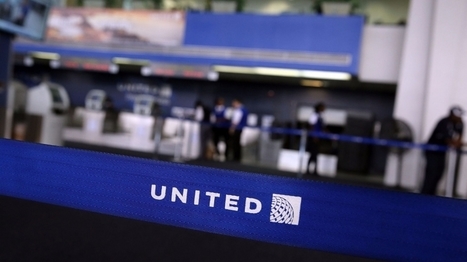


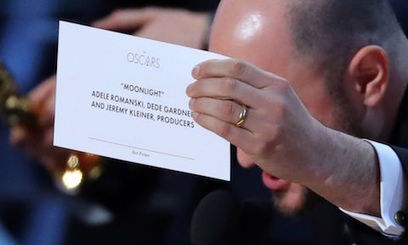


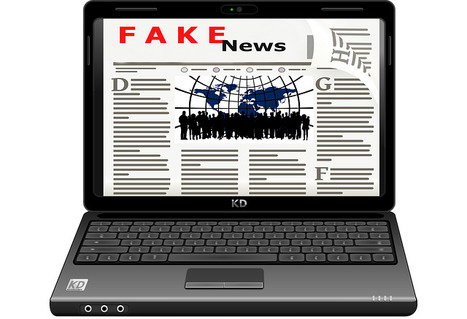
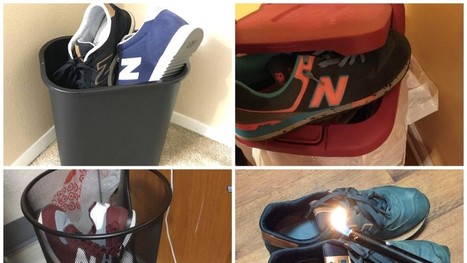


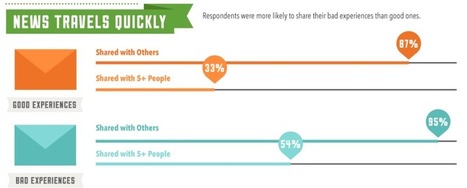
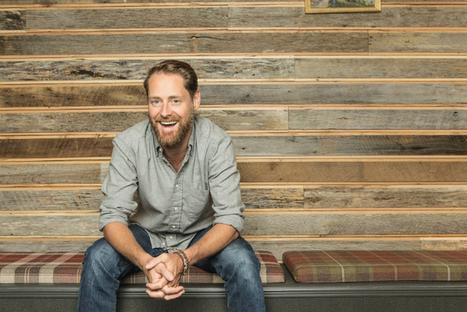
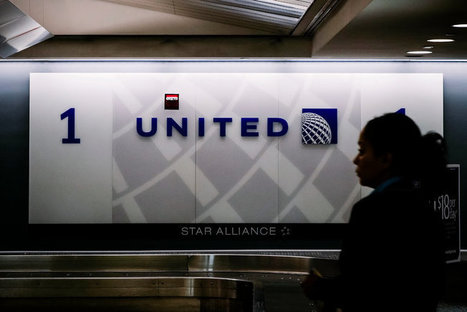

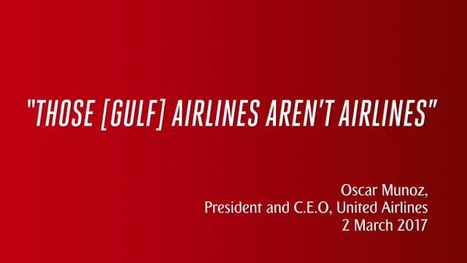




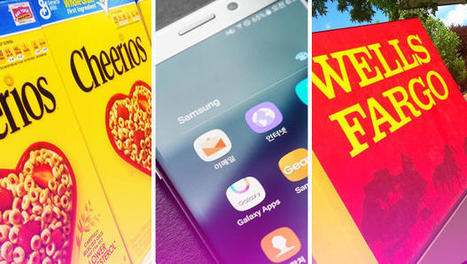








Check out these free social media and brand monitoring tools to take your social game to the next level.